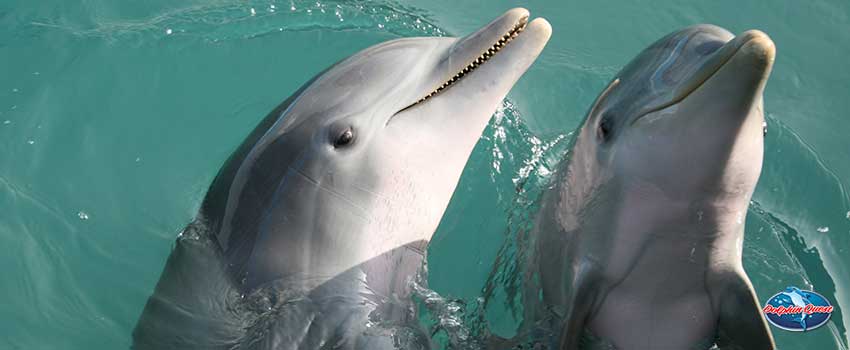Dolphins have long captivated human imaginations, and, strangely, they have always seemed to share a kindred relationship with people. They are among nature’s most beautiful creatures, as well as some of the most playful and intelligent creatures.
Dolphins are mammals, not fish, despite spending their whole lives in the water. Unlike fish and other marine creatures, they cannot breathe underwater and must rise to the surface to breathe air.
Dolphins come in a variety of shapes and sizes, but a common trait links these different types of dolphins—their playfulness! Get ready to discover several dolphin facts and what makes these intelligent creatures so playful.
Dolphin Facts: Everything You Need to Know
Dolphins are much adored by everyone. Sure, a lot of dolphin characteristics that you know are beautiful and quirky, but these aquatic creatures are much more than meets the eye.
From their internal structure to how they communicate, these dolphin facts demonstrate why dolphins are so playful and why they are one of the greatest creatures in the oceans.
What Do Dolphins Eat?
The great bulk of meals for most dolphins is fish. According to studies of bottlenose dolphins, fish such as eels, hake, and mullet fish accounted for 98 percent of their prey volume.
Dolphin diets, on the other hand, will vary according to the dolphin characteristics, the environment, and species. For example, dusky dolphins off the coast of South America consume significantly more anchovies.
Where Do Dolphins Live?
Dolphins are found in all of the world’s seas and oceans, as well as certain rivers. Some species prefer to dwell near the coast, while others favor tropical waters further out at sea. Finally, some species venture far from shore on the open seas depending on the dolphin characteristics.
Dolphins’ Internal Structure
Dolphins are not only known for being exceptionally clever, but they also possess distinct features like highly developed social skills and self-awareness, which propel their playful nature.
Dolphins, like humans, require social structure for communication, breeding, and protection. They leave or join social groupings throughout time, resulting in what is known as a fission-fusion society.
Dolphins are gregarious creatures that form tight bonds with other members of their species and, on occasion, other species. During this process, one often appears to be a playful dolphin that is sensitive, cooperative, and benevolent.
You may be wondering what a group of dolphins is called. As highly sociable creatures that travel and hunt, dolphins usually form groups known as societies.
Most species live in societies of 2 to 30 dolphins, depending on the species, but in some regions with sufficient food, multiple societies can merge to form super societies with over 1,000 individuals.
Dolphin behavior usually relies on this contact for hunting, mating, and self-defense. In certain situations, these super societies contain many species of cetaceans that play with each other nicely.
Dolphin Behavior: Why They Group and Play
Aside from following a pattern acquired since birth, dolphins have various motives to join groups and play. Dolphin adaptations propel small dolphin species to form multi-member societies to compensate for their small size when confronted by predators.
Together, these groups safeguard an animal that lacks huge jaws and razor-sharp teeth. When dolphins congregate, it is simpler for them to live if they collaborate with one another, either by communication or by scaring the predator if there is a big group.
As they live in societies with dozens of other dolphins, they create lifelong friendships through social and playful ways. They swim through bubble rings they made on their own and surf in the waves as part of their sociable and fun personality.
These sorts of acts, however, serve a larger function. Dolphins play because it is a crucial component of dolphin calves’ cognitive function and allows them to become familiar with other members of the group.
Dolphin adaptations provide calves the opportunity to learn key social skills and get information about the features and predispositions of members of their social group, particularly their classmates, via playing. Playing, in addition to teaching dolphin calves how to behave, gives them a significant opportunity to learn how to think.
How Do Dolphins Communicate while Playing?
Dolphins generally communicate with each other while playing by producing whistles. Dolphin adaptations have allowed for each dolphin to have a distinct whistle that distinguishes it from other members of its society.
If an individual is in difficulty, the society responds promptly by emitting a specific sound that signifies that assistance is required.
Although it would seem natural for dolphins to connect primarily with their own species, there is evidence that some dolphin species are interested in interacting with people while playing.
Dolphins are incredibly curious in the wild, and they will frequently interact with humans if the opportunity arises. Dolphins in captivity have strong bonds with the humans that play with them, such as trainers or even researchers.
What Type of Games do Dolphins Love to Play?
Dolphins have long been regarded to be incredibly energetic, inquisitive, and curious animals. They frequently battle with one another and play games with seaweed. Dolphins also like playing with other animals, such as dogs.
Dolphins’ capacity to establish and manage play situations allows them to provide fresh experiences for themselves and their playmates in relatively secure environments. As such, they have been known to engage in different types of games that stimulate these cognitive functions.
Below are some of the activities that dolphins engage in on a regular basis in the wild:
- Bubble Rings – These toys are made by dolphins. Dolphins plunge to blow an air ring through the blowhole. It looks like a hula hoop.
- Swimming – Dolphins love to swim a lot. They are capable of performing the most bizarre tricks like jumping up high into the air and then diving into the water like a corkscrew. They enjoy swimming alongside sailing boats. Dolphins are not only fond of swimming but also highly capable. Dolphins can travel at speeds of up to 35mph in the water.
- Playing with Each Other – Dolphins can still be together if they do something else. They can talk to one another, swim together, or blow air rings together. They seem to enjoy all of the above activities more than they do with their peers.
See How Playful Dolphins Are with Sunshine Scenic Tours
If you are curious about how playful dolphins are, then see them play firsthand through Sunshine Scenic Tours’ dolphin cruise at Madeira Beach.
Dolphins are one of the most gorgeous and adorable aquatic animals. A dolphin cruise with Sunshine Scenic Tours is an event you should not miss when in Florida. Contact us today!







